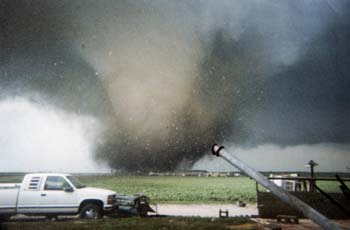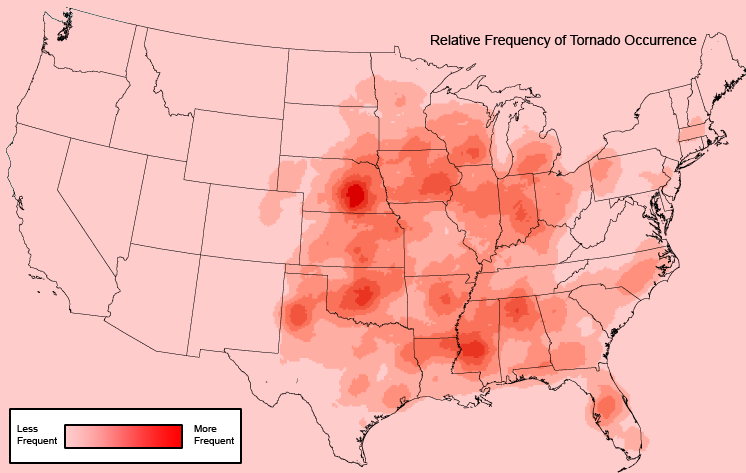
(1961 - 1990)
 |
A Powerful Tornado |
Tornadoes occur in many parts of the world, including Australia, Europe, Africa, Asia, and South America. Two of the highest concentrations of tornadoes outside the U.S. are Argentina and Bangladesh. Both have similar topography with mountains helping catch low-level moisture from over Brazil (Argentina) or from the Indian Ocean (Bangladesh).
About 1,000 tornadoes hit the United States annually. Since official tornado records only date back to 1950, we do not have a reliable statistical average for the number of tornadoes that occur each year. Furthermore, tornado spotting and reporting methods have changed a lot over the last several decades with the widespread deployment of satellites and doppler radar.
The map below (Figure 1) shows the relative frequency of tornados for the United States. Tornadoes are most likely to occur in the Mid-West where upper-air disturbances generated by the Rocky Mountains are juxtaposed with warm, moist air at the surface that is advected in from the Gulf of Mexico.

Figure 1: Relative Frequency of Tornado Occurance. Darker red color indicates a higher frequency of tornados.